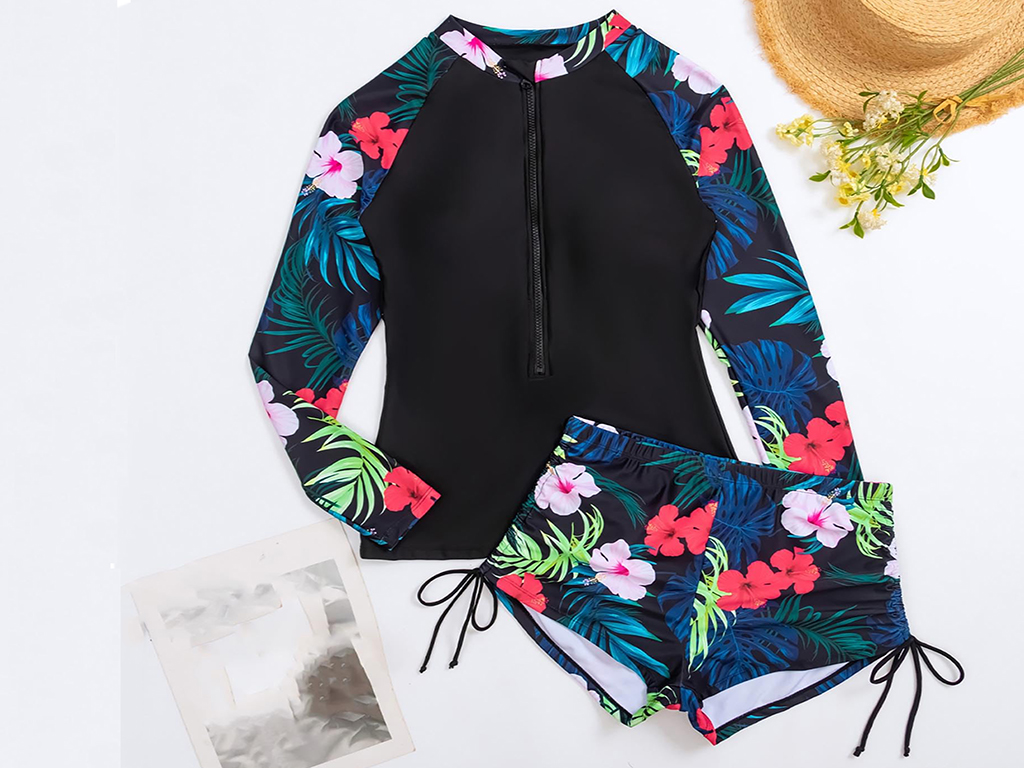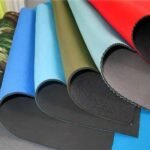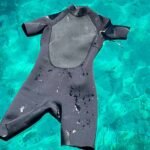Swimwear materials play a crucial role in performance, comfort, and durability. Among the variety of materials available, neoprene has become a popular choice for swimwear, especially for specialized activities. If you’re wondering whether neoprene is suitable for swimwear, this guide will answer all your questions.
Neoprene is an excellent material for swimwear, offering insulation, durability, and flexibility. It is particularly ideal for activities like cold-water swimming, diving, and water sports where performance and protection are key.
Let’s explore the various aspects of neoprene swimwear to understand its benefits and ideal uses.
Can neoprene be used for swimming?
Neoprene is widely used in swimwear, particularly for specialized swimming activities. Its unique properties make it an excellent choice for performance and protection.
Neoprene can be used for swimming as it provides insulation, buoyancy, and protection against abrasions. It is commonly used in wetsuits and swimwear designed for cold-water swimming and water sports.
Neoprene’s thermal properties keep swimmers warm in cooler waters, while its flexibility ensures ease of movement. These features make neoprene swimwear a preferred option for both recreational and professional swimmers.
Key Features for Swimming
- Insulation: Retains body heat, making it ideal for cold waters.
- Buoyancy: Enhances flotation, reducing fatigue during extended swims.
- Durability: Protects against scratches and abrasions from surfaces like rocks or coral.
What are the benefits of neoprene swimsuits?
Neoprene swimwear offers a range of benefits that enhance performance, comfort, and protection. Its specialized features cater to the needs of swimmers and water sports enthusiasts.
Neoprene swimsuits provide thermal insulation, flexibility, durability, and buoyancy. These benefits make them ideal for cold-water swimming, diving, and other demanding aquatic activities.
Detailed Benefits
| Benefit | Description |
|---|---|
| Insulation | Keeps swimmers warm by trapping body heat. |
| Flexibility | Adapts to body shape, allowing freedom of movement. |
| Durability | Resists wear and tear, prolonging its lifespan. |
| Buoyancy | Assists in flotation, improving swimming efficiency. |
These advantages make neoprene swimsuits an excellent choice for professionals and recreational users alike.
Is neoprene good for beach?
Neoprene is a practical and functional material for beachwear, offering benefits for both active and casual use. While it’s primarily designed for performance, it also provides comfort and protection.
Neoprene is good for the beach because it protects against UV rays, resists abrasions, and offers insulation. However, its thermal properties may make it less comfortable in very hot weather.
Pros and Cons of Neoprene for Beach Use
| Aspect | Pros | Cons |
|---|---|---|
| Protection | Shields against rough surfaces and UV exposure. | May feel too warm in high temperatures. |
| Durability | Resistant to sand and saltwater damage. | Heavier compared to traditional fabrics. |
| Versatility | Suitable for water sports and casual wear. | Limited breathability in hot conditions. |
Neoprene beachwear is particularly advantageous for those engaging in activities like surfing, snorkeling, or paddleboarding.
Which Activities Are Best Suited for Neoprene Swimwear?
Neoprene swimwear is highly specialized and excels in activities that require insulation, flexibility, and durability. Its unique properties make it ideal for a variety of aquatic activities.
Neoprene swimwear is best suited for cold-water swimming, diving, surfing, and triathlons. It provides the necessary protection and performance features for demanding environments.
Popular Activities
- Cold-Water Swimming: Keeps swimmers warm in icy waters.
- Diving: Protects against temperature drops and abrasions.
- Surfing: Provides flexibility and insulation for long sessions.
- Triathlons: Enhances performance with buoyancy and streamlined design.
Neoprene swimwear is a go-to choice for professionals and enthusiasts seeking reliable performance in challenging conditions.
How Do You Care for Neoprene Swimwear?
Proper care is essential to maintain the performance and lifespan of neoprene swimwear. With regular maintenance, you can ensure its durability and effectiveness.
To care for neoprene swimwear, rinse it with fresh water after use, clean it with mild soap, and let it air dry away from direct sunlight. Avoid using harsh chemicals or machines to preserve its elasticity and durability.
Care Instructions
- Rinse After Use: Remove salt, chlorine, and debris with fresh water.
- Use Mild Soap: Gently clean the surface without scrubbing too hard.
- Air Dry: Lay flat in a shaded area to prevent shrinking or damage.
- Avoid Heat: Do not use dryers or expose it to direct sunlight for prolonged periods.
Common Mistakes to Avoid
| Mistake | Effect |
|---|---|
| Using hot water | Can damage the material’s structure. |
| Machine washing | May tear or weaken neoprene. |
| Storing while wet | Promotes mold growth and odors. |
By following these care tips, your neoprene swimwear can remain in top condition for years.
Conclusion
Neoprene is an excellent material for swimwear, offering a combination of insulation, flexibility, and durability that traditional fabrics cannot match. It is particularly suitable for cold-water activities, water sports, and environments where protection and performance are essential. At Szoneier, we specialize in high-quality neoprene swimwear tailored to meet the needs of brands, wholesalers, and retailers.
If you’re looking for customizable neoprene swimwear solutions, contact us today. We offer expert guidance, premium materials, and flexible customization options.











